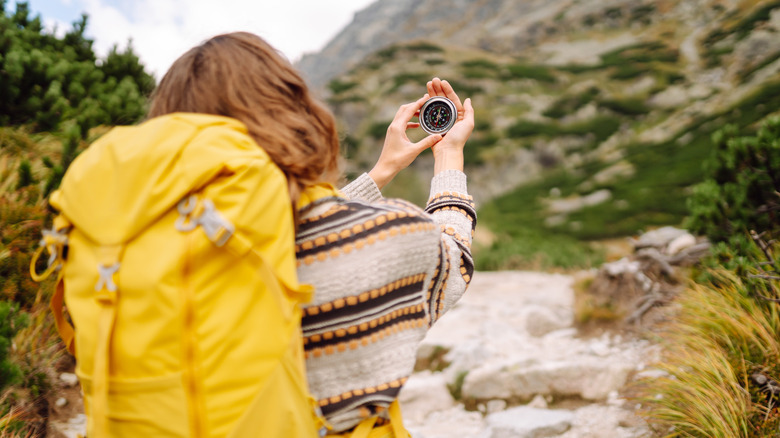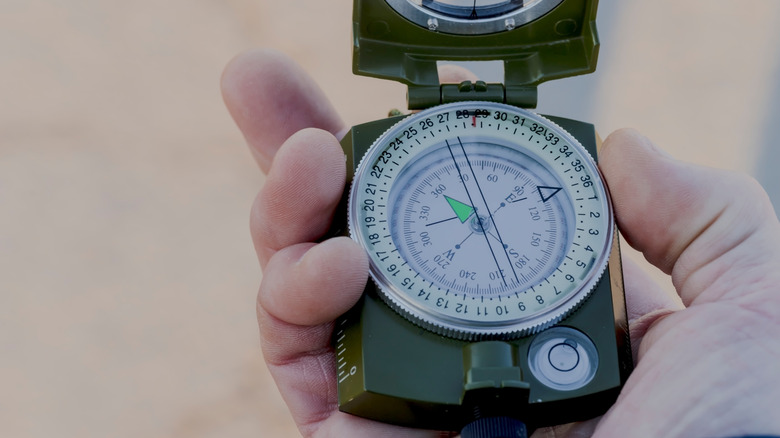Protecting Your Compass From This One Thing Could Save Your Life
We may receive a commission on purchases made from links.
When people talk about travel "survival guides," it's usually meant in an off-hand way: the phrases in the local language or little nuggets of local context that'll streamline your experience as a tourist. But for off-grid and adventure travelers, "survival" is often a concept taken literally. So what equipment should you include in your real survival toolkit? You'll require a pack, some shelter, something to make fires, and probably cooking and hunting equipment. Assuming navigation is also a concern, you'll definitely need maps and a compass. Compasses have been vital to explorers since at least the 12th century (and perhaps much earlier in ancient China) and still are today. But equally vital is ensuring that your compass doesn't get wet.
It's no exaggeration to say that a dry compass could be the difference between life and death. Even one that's been subjected to just a single drop of water may not give an accurate reading. If you're deep in the wilderness and are covering large distances, a marginally misaligned compass could send you miles in the wrong direction. You can use things like sealant, fabrics coated with water-resistant spray or wax, and waterproof bags — even IKEA offers a budget-friendly option — to keep your compass dry, but investing in the right compass is just as important.
What kind of compass should I buy?
When it comes to compasses, there are two main types to choose from. Lensatic compasses offer greater precision and are often relied on by military personnel, while baseplate compasses are lightweight and suited to people learning navigational skills. There are also mirrored baseplate compasses, which offer precise readings and usually include a clinometer for measuring slopes, or you could buy a simple button compass, which you can attach to your bag or keychain and will serve as a handy backup.
If you end up orienteering in torrential conditions, you'll want to have invested in a compass that's high quality, durable, and waterproof. Cammenga's Official U.S. Military Tritium Lensatic Compass is pricey at $110 (as of this writing) but is about as good as any on the market. Renowned for its reliability and accuracy, it's also suited to all conditions, whether you're in a monsoon, a sandstorm, or trudging across the arctic tundra. Alternatively, Eyesky sells a military-style, survival compass for less than $20. The compass comes in a zinc alloy case, is resistant to rain and extreme temperatures, has an optical reading display for higher accuracy, and also lights up for navigating at night. It might be cheap, but Amazon users have given it a 4.6 rating across more than 3,600 reviews.

